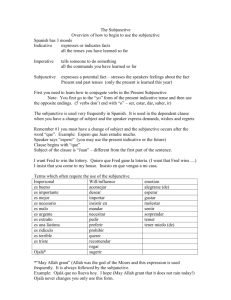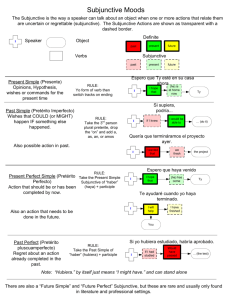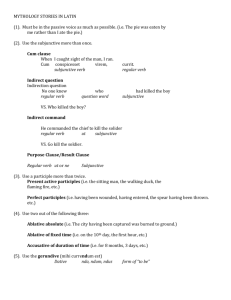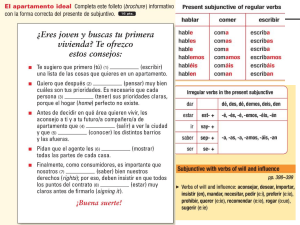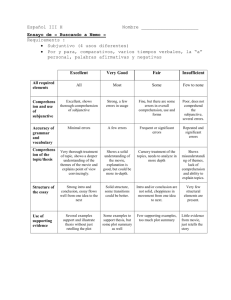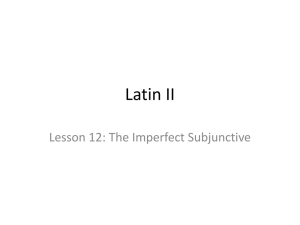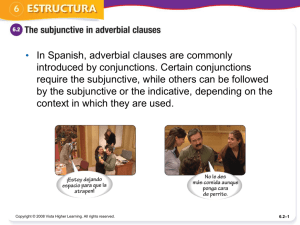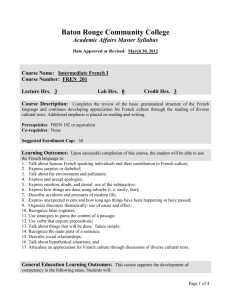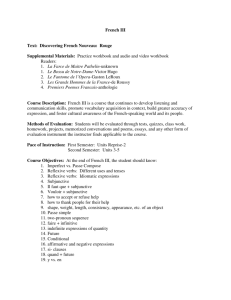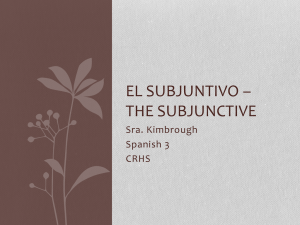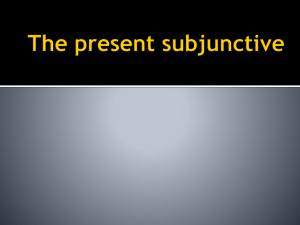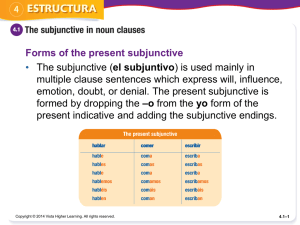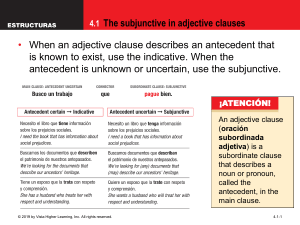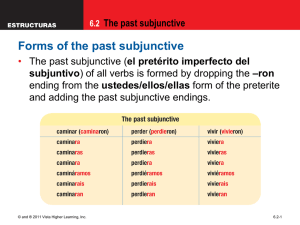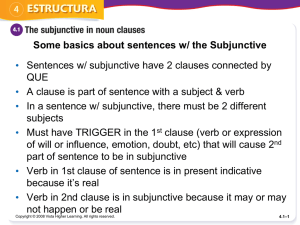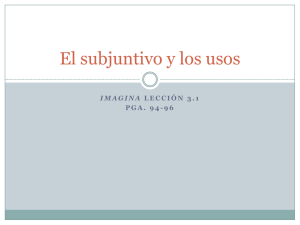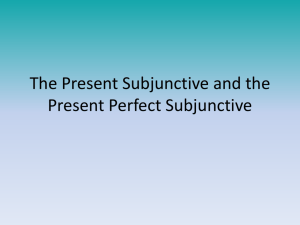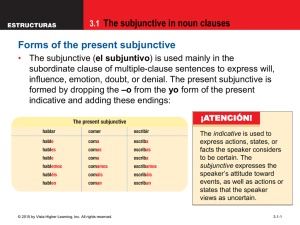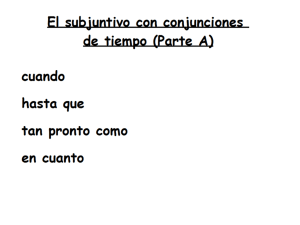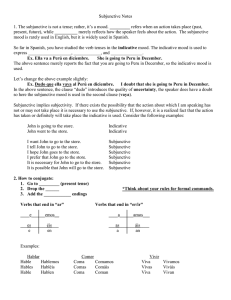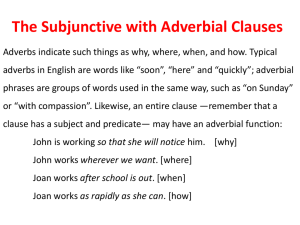The present perfect subjunctive
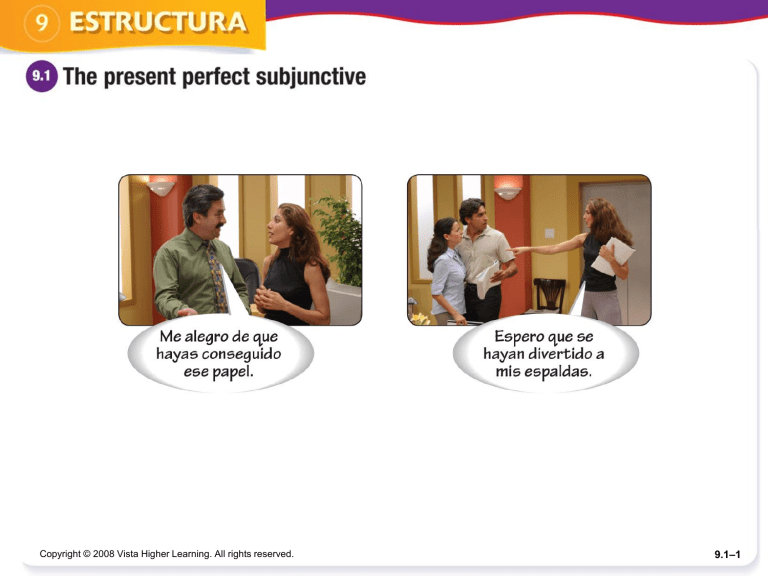
Copyright © 2008 Vista Higher Learning. All rights reserved.
9.1
–1
• The present perfect subjunctive ( el pretérito perfecto de subjuntivo ) is formed with the present subjunctive of haber and a past participle.
Copyright © 2008 Vista Higher Learning. All rights reserved.
9.1
–2
• Like the present perfect indicative, the present perfect subjunctive is used to refer to recently completed actions or past actions that still bear relevance in the present. It is used mainly in multiple-clause sentences that express will, emotion, doubt, or uncertainty.
PRESENT PERFECT INDICATIVE
Luis me dijo que ha dejado de ver ese programa.
Luis told me that he has stopped watching that show.
PRESENT PERFECT SUBJUNCTIVE
Me alegro de que Luis haya dejado de ver ese programa.
I’m glad that Luis has stopped watching that show.
Copyright © 2008 Vista Higher Learning. All rights reserved.
9.1
–3
• Note the difference in meaning between the three subjunctive tenses you have learned so far.
PRESENT
SUBJUNCTIVE
PRESENT PERFECT
SUBJUNCTIVE
Las cadenas nacionales buscan corresponsales que hablen varios idiomas.
Prefieren contratar a los que hayan trabajado en el extranjero.
Antes,
PAST
SUBJUNCTIVE insistían en que los solicitantes tuvieran cinco años de experiencia.
The national networks look for correspondents who speak several languages.
They prefer to hire those who have worked abroad.
In the past, they insisted that applicants have five years’ experience.
Copyright © 2008 Vista Higher Learning. All rights reserved.
9.1
–4
In a multiple-clause sentence, the choice of tense for the verb in the subjunctive depends on when the action takes place in each clause.
The present perfect subjunctive is used primarily when the action of the main clause is in the present tense, but the action in the subordinate clause is in the past.
Copyright © 2008 Vista Higher Learning. All rights reserved.
9.1
–5
